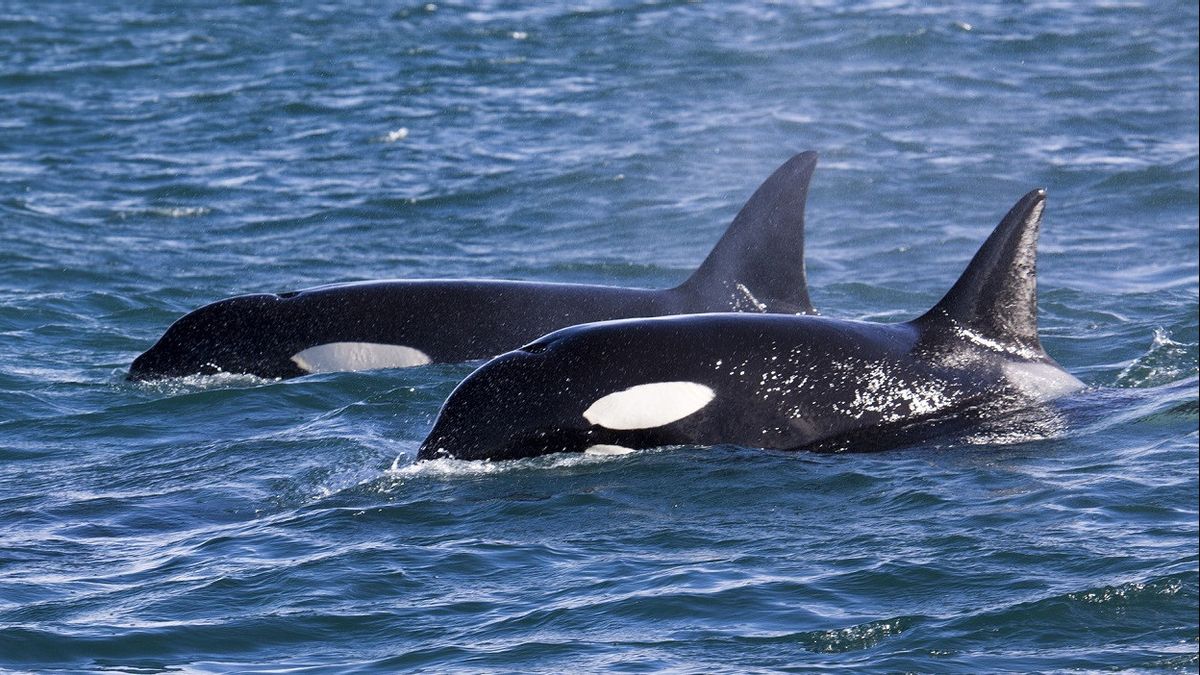Dolphins, tickers, killer whales, sperm whales and other teething whales produce a series of sounds, to find prey using a sonar-like system called the echolocation, as well as to communicate with other members of their species.
The exact mechanism they used has long been a puzzle, until now it has been revealed, it turns out that everything is on the nose. The researchers provide a comprehensive explanation for the sound production by the whale with teeth - a loud click for the echo, to a credit burst and a softer whistle for communication.
It is an air-driven system in the nose, analogous to runts, or ballot boxes, in other humans and mammals and comparable syrinxes in birds.
These marine mammals, which have a large and complex brain, have used ecolocation - reflecting high-frequency sounds from underwater objects - to capture prey such as fish and squid for tens of millions of years.
"The reverberating phonic lips make the loudest sound in the animal empire by forcing high-pressure air through a structure called phonic lips on their noses," said Peter Madsen, a professor of sensory physiologicals and whale biologist at Aarhus University in Denmark, one of the lead studies published in the journal Science. April 13.
"Phonic seeds are open about one millisecond, and when they slap back they create network vibrations that form very loud clique sounds in the water in front of whales that are used to echo prey for more than 1,000 meters (0.6 miles).) depth," added Madsen.
Phonic lips consist of ikat and fat networks. The resulting sound turns out to operate on different vocal registers such as the human voice: "fry register" for the click, "chest register" for the pulse exchange and "falsetto register" for the whistle.
"Votions are made with the same mechanism, namely independent oscillations induced by airflows. But the critical difference is that in humans and other land mammals, air is used both as a propellant that makes sound bands vibrate as well as as the medium. where the sound is spread, "explained Coen Elemans, a professor of bioacoustics at the University of Southern Denmark and an expert in animal voice production involved in the study.
"In the whale with teeth, air is only used to move the fonic lip which then, through network acceleration, produces clique sounds that spread through the tissue in the nose and then enter the water," added Elemans.
Through evolution, the production of sound moves on the whale from the trakea, or the throat stem, into the nose.
Because very little air is used per click and because whales can recycle air, research has solved how deep whales can emit sound without using a lot of air.
"Layngeal and synringeal sound production relies on the pressurized air from the lungs, but it won't work for whales with deep dive teeth, because their lungs collapse due to high hydrostatic pressure at depths. By putting pressure on phonic lips with air reservoirs on the nose, they can still make sounds in the deep sea," explained Elemans.
The researchers used voice recording markers on sperm whales, fake killer whales, and bottlenose dolphins to study sound production in the wild.
They also use videos from endoscopes, thin tube-shaped instruments, to image the fonic lips of the port dolphins and bottlenose dolphins in captivity. They also image the lip surgery and anatomy of dead dolphins stranded.
The sound made by the whale has different teeth from the "sing" that haunts the filter-eating basket whale.
"The whale with teeth doesn't sing like a balin whale," said Madsen.
"It is believed that balin whales use their sound bands in rants like other mammals, but we still don't know how the balin whales actually sound out. During their evolution, the teething whales have lost their soundbands, but have fully evolved a collection of new sound sources in the nose," he said.
The English, Chinese, Japanese, Arabic, and French versions are automatically generated by the AI. So there may still be inaccuracies in translating, please always see Indonesian as our main language. (system supported by DigitalSiber.id)








